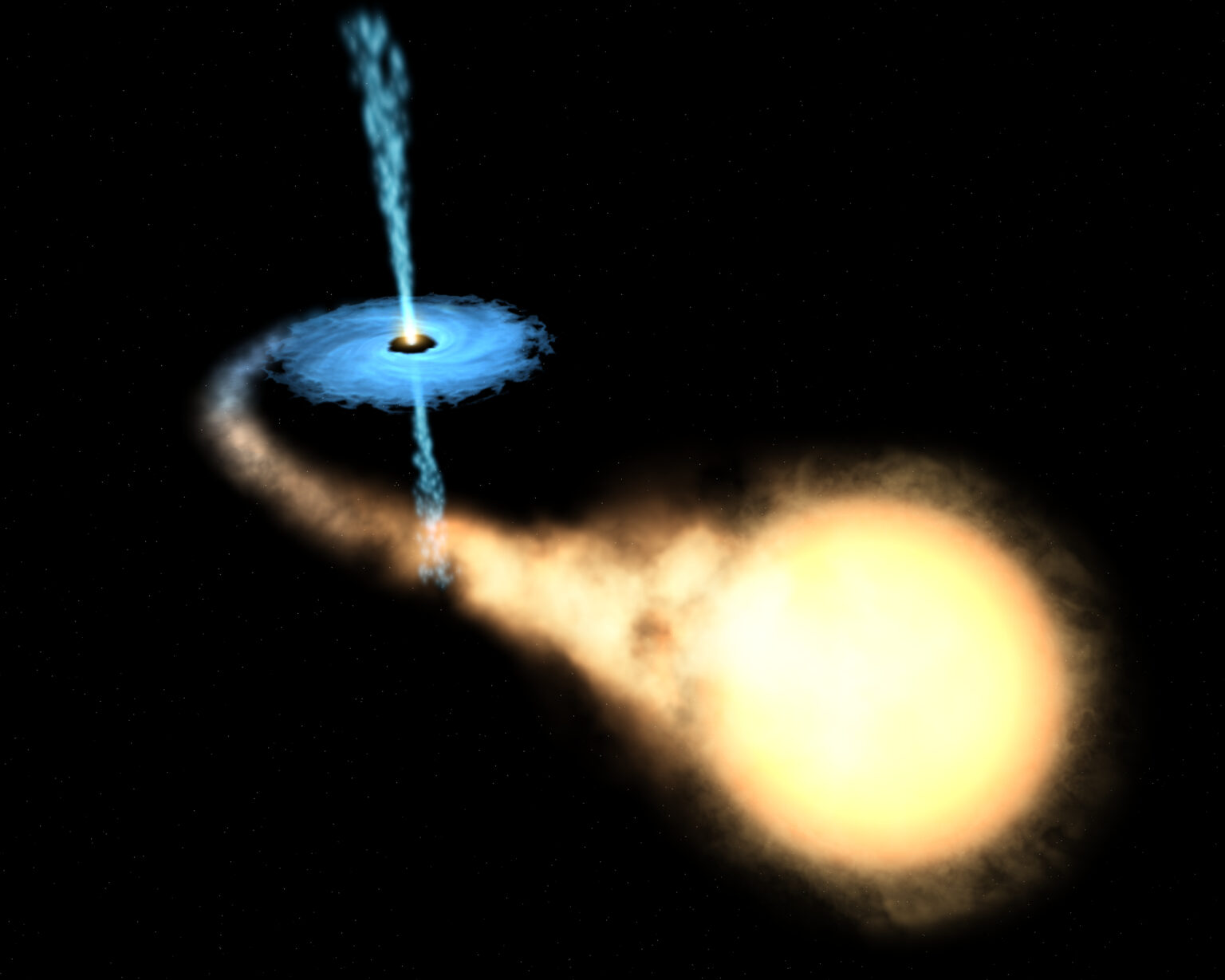A team of scientists has studied black holes that are part of binary systems. They claim that dark matter, which is located near these objects, is responsible for reducing the orbital period of their components.

Observation of black holes
Dark matter is present near black holes. At least this is how a group of scientists from the University of Hong Kong interprets the results of their work. They are published in The Astrophysical Journal Letters.
Dark matter does not enter into any interaction with the rest of the world, except gravitational. Therefore, it is more difficult to observe it than even black holes that emit nothing when there is no matter around them. However, when singularities interact with other objects, you can see not only them, but also many invisible things around.
This is what the new study is based on. Scientists have chosen two black holes: A0620-00 and XTE J1118+480. Each of them is part of a binary system, the second component of which is an ordinary star. Scientists have been tracking the very movement of these luminaries for a long time.
Dark matter slows down the orbit of stars
The researchers concluded that both stars were constantly decreasing their orbital period around the black hole. This is as it should be, but the reduction in orbit is a whole millisecond, which is about 50 times more than the theory suggests.
Scientists are convinced that the dynamic friction effect resulting from the presence of dark matter is responsible for this slowdown. This substance is not capable of providing an effect similar to atmospheric particles in Earth orbit, but the gravitational force of the cloud of this exotic type of substance still slows down the star a little.
The existence of such clouds was provided by the theory at the end of the twentieth century. Black holes are one of the few objects in the Universe that can interact with dark matter. They absorb it, but part of it should be thrown out and cause “bursts of density”.
Previously, dark matter has already been recorded near black holes. But to do this, it is necessary to observe the merger of black holes with the help of gamma-ray telescopes, which happens quite rarely and it is extremely difficult to predict it in advance. The new method is much more productive.
According to phys.org.
Follow us on Twitter to get the most interesting space news in time
https://twitter.com/ust_magazine

